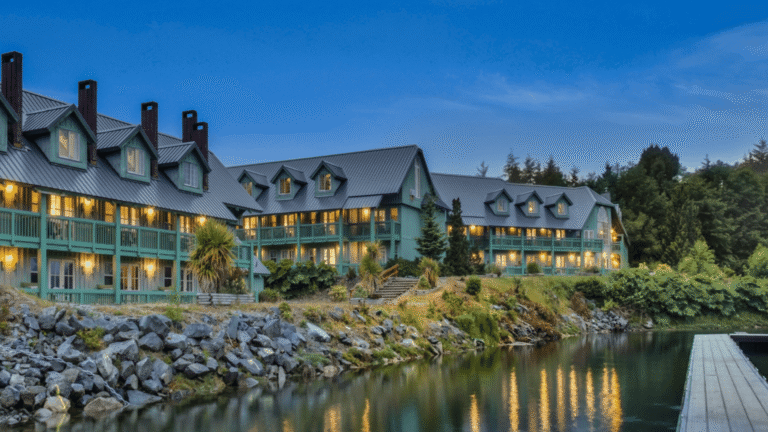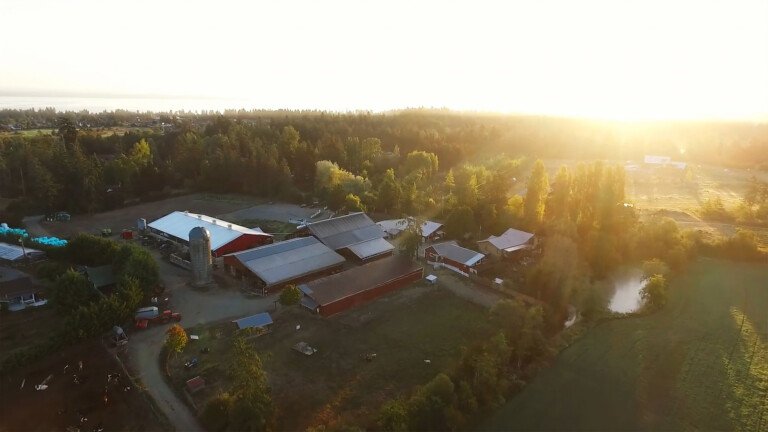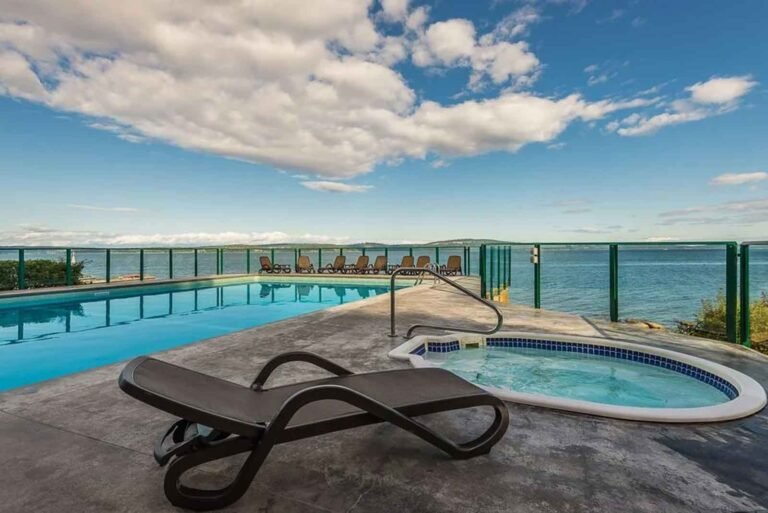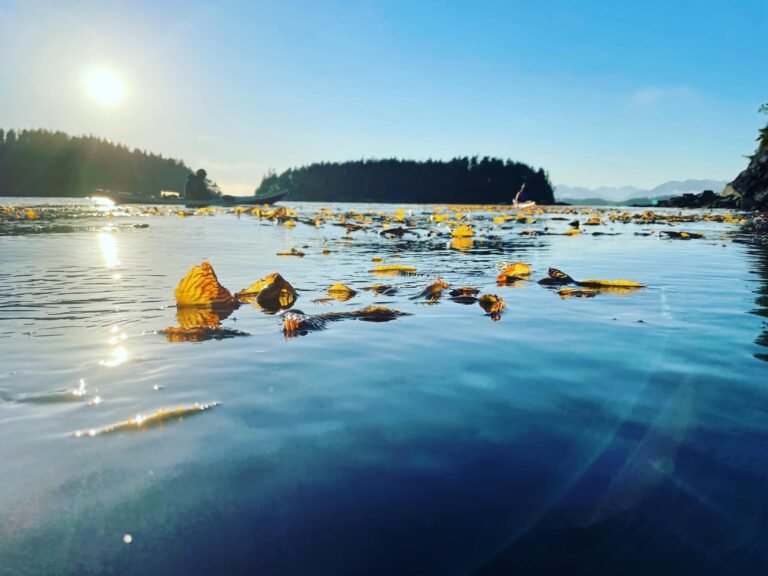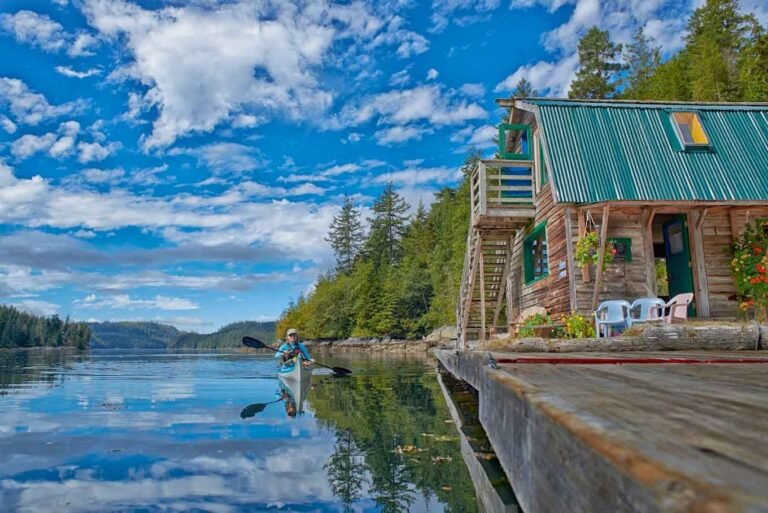There is only one ski resort along the Sea to Sky Highway, but it is none other than the world-renowned Whistler Blackcomb Ski Resort, consistently rated the top ski resort destination in North America and the venue, with Vancouver, for the Vancouver 2010 Winter Olympic Games.
Downhill Skiing and Snowboarding – Whistler
Whistler Mountain (elevation 7,160 feet/2182 m) and Blackcomb Mountain (elevation 7,494 feet/2284 m) competed with each other for two decades before merging in the spring of 1997. Competition between the two led to their status in the minds (and hearts) of many skiers and snowboarders as the premier North American winter resorts. Their union merely confirmed the impression that, for most visitors, Whistler is a seamless valley. You can just as easily explore one mountain as the other. Each offers a complimentary perspective on its companion and each has a loyal following of ski and snowboard devotees.
The best answer to the question ‘which is best?’ is that when you’re in heaven, it doesn’t matter which side of the street you walk on. Both have been around long enough (Whistler since 1965, Blackcomb since 1980) to have developed trails over a combined total of 7,071 acres (2,862 hectares) that over the seasons have been shaped, groomed, and gladed to hold snow and reduce obstacles.
Some of the lengthier trails on Whistler Mountain include the Dave Murray Downhill, one of the world’s premier downhill race courses, and Franz’s, named for Franz Wilhelmsen, one of the founders of the Garibaldi Lift Company, who originally developed the trails on Whistler. Over on Blackcomb, Couloir Extreme and Blackcomb Glacier are two of the more renowned runs, both of which originate in the high alpine region of the mountain. Each year more runs are added. Even for those who have spent many years visiting the two mountains, constant change makes each new season seem like the first.
Whistler Mountain hosts World Cup ski and snowboard races at the beginning of the season, while Blackcomb is the site of World Cup freestyle competition in early January. (One of the novelties of summer is to watch freestyle skiers practise their routines at the foot of Blackcomb in a specially designed outdoor swimming pool.) Both mountains share a common statistic: an average annual snowfall of 30 feet (9 m).
A total of 3 gondolas, 18 chairlifts, and 12 surface lifts ascend both mountains from three separate locations in Whistler. Creekside (elevation 2,140 feet/653 m), at the south end of town, is the site of the original Garibaldi Lift Company operation. The Creekside gondola runs up the west side of Whistler Mountain to Midstation (elevation 4,265 feet/1,300 m). From here, skiers and snowboarders make their way higher up the mountain on the Orange and Big Red Express chairlifts or head back downhill to either Creekside or Whistler Village. From the heart of the Whistler Village (elevation 2,215 feet/675 m) the Excalibur gondola links with the Excelerator Express chairlift on Blackcomb, while the Whistler Village gondola runs to Olympic Station at midmountain (elevation 3,346 feet/1003 m) and continues up the north side of Whistler Mountain to Pika’s and the Roundhouse (elevation 6,069 feet/1850 m).
The Wizard Express quad-chair runs from the Blackcomb Day Lodge in the Upper Village (elevation 2,247 feet/685 m) and connects with the Solar Coaster Express quad-chair to take skiers, snowboarders, and sightseers to the Rendezvous Lodge (elevation 6,102 feet/1860 m). A high-speed quad chair called The Peak carries skiers to the summit in less than 4 minutes. All lifts from the village connect with a multitude of lifts higher up each mountain, allowing skiers and snowboarders to fan out across the slopes. The longest lineups are at the base of the mountains. The farther uphill you go, the more dispersed the crowds become, and lineups predictably shrink. T-bars and chairlifts transport skiers and snowboarders to the summit of each mountain.
It takes 30-60 minutes riding a combination of interconnecting gondolas and/or chairlifts to reach the upper slopes of each mountain from its base. If conditions permit, you can easily spend that much time making your way to the bottom. Snow-making equipment installed on lower slopes helps maintain an adequate covering so that, with the exception of the beginning and end of the winter season, you should be able to reach the bottom without downloading on one of the lifts. One caution: During mild weather, icy conditions may persist at lower elevations. Unless you have razor-sharp edges and energy to burn, download rather than ski out at the end of the day. As attractive as the idea of skiing or snowboarding on both mountains in a single day may be, in reality you’ll spend more time riding lifts than you will enjoying the outdoors. Better to explore one mountain per day and savour every moment you can.
Whistler Blackcomb’s world-record-breaking Peak 2 Peak Gondola is an incredible feat of engineering that connects Whistler and Blackcomb Mountains. As the gondola glides quietly out of its station at Whistler Mountain’s Roundhouse into the spectacular vista, Whistler Village is off to the left and the mountains to the right. The real treat comes when you slide over the top of the ride’s second tower and head down the cable’s gentle slope as it sags onto its 3-km unsupported, world-record span. The view opens up to reach kilometres down past the village to Alta Lake and the valley, and you can stare 436 metres down to Fitzimmons creek below. Riding the Peak 2 Peak is included in the price of a lift pass.
One of the best introductions to each mountain is provided by Whistler’s Mountain Ambassadors and Blackcomb’s Mountain Hosts. Stop by guest relations at Blackcomb’s Daylodge, Rendezvous Lodge, or Glacier Creek Lodge, or the Whistler Village gondola station, the Creekside gondola station, or the Guest Satisfaction Centre on Whistler Mountain to arrange for a complimentary guided tour. Local volunteers will lead you around the mountain and introduce you to runs that suit your abilities. It’s a good way to get an insider’s look at the mountains and to learn more about Whistler in general. Whistler Mountain has slightly more terrain developed for beginners than Blackcomb (20 percent versus 15 percent). Both mountains devote about 55 percent of their trails to intermediate-level skiers and snowboarders, with the remainder considered the domain of the expert (25 percent on Whistler, 30 percent on Blackcomb).
Both mountains have special areas set aside for snowboarders. Blackcomb was the first of the two mountains to welcome snowboarding, and as a result maintains more appeal for younger boarders. Glacier ice still cloaks the peaks of both mountains, but Blackcomb’s is much larger. Come summer, skiing and snowboarding carries on without a pause right through August on the Blackcomb glacier. What sets Whistler Mountain apart from Blackcomb is its series of wide alpine bowls: Bagel, West, Whistler, Harmony, Symphony, Sun, and Burnt Stew Bowls define the upper reaches of the mountain. Because they are tucked away at high altitude it’s difficult to appreciate their magnificence from the valley. Lessons and rentals can be arranged at the day lodges of both mountains. In addition, there is a proliferation of rental shops throughout Whistler Village.
Lessons and rentals can be arranged at the day lodges of both mountains. In addition, there is a proliferation of rental shops throughout Whistler Village. The best bargain on lift tickets is a five-day pass.
Cat-Skiing and Heli-Skiing – Whistler and Pemberton
Snow-cat Skiing: Those with an aversion to flight, snow-cat skiing and snowboarding can get you into the untracked backcountry just as effectively as heli-skiing and snowboarding.
Cat-Skiing in Pemberton.
Heli-skiing and Heli-Snowboarding can also be arranged in Whistler. The deep blue sky, calm conditions and comfortable temperatures enhance the great powder experience of heli-skiing Whistler and Blackcomb Mountains. This ultimate skiing and snowboarding experience is no longer the preserve of expert skiers, with new fat boy powder skis and refined snowboards making it possible for intermediates to float on the powder and delight in the amazing experience of heli-skiing.
Heli-Skiing in Whistler and Blackcomb Mountains.
Cross-Country Skiing and Other Winter Activities – Whistler
Cross-country skiing in Whistler is all about relaxation. There’s no pressure to get in line because there are no lineups. There are several styles of cross-country trails around Whistler. The Valley Trail is a designated winter ski trail. You don’t have to worry about any errant golf balls heading your way during this season, either. This mostly level loop route runs for almost 10 miles (16 km) and passes many of Whistler’s neighbourhoods and Lost Lake. The trail can be accessed from any number of places, including the Whistler Golf Course on Hwy 99 in Whistler Village, the Meadow Park Sports Centre on Hwy 99 in Alpine Meadows, and Rainbow Park on Alta Lake Road. The Valley Trail also passes through Lost Lake.
The 18-mile (29-km) network of packed and tracked trails around Lost Lake is easily located. Just drive into Whistler Village on Village Gate Boulevard and turn left onto Blackcomb Way, then right into the parking lot directly across from the municipal offices and medical clinic. This is where the trail to Lost Lake begins. Shortly after starting out, you will come to a log chalet, where you must pay a fee for use of the Lost Lake trails. Skiing around the lake will take a quick 60 to 90 minutes. The selection of approaches ranges from beginner to expert, marked like downhill runs.
Lost Lake often freezes in a way that makes it appear still to be open water. The wind sweeps the snow into small drifts that look like whitecaps. The setting sun reflects pink off the clouds onto the icy surface below. An added bonus is that night skiing is also possible at Lost Lake on the 2.5-mile (4-km) Lost Lake Loop Trail.
There are several other locations near Whistler where cross-country skiers head. At the north end of Green Lake on the west side of Hwy 99, the road up 16-Mile Creek to Cougar Mountain is used by snowmobilers, with advantages for skiers too. This is also a particularly good place to snowshoe in dry and powdery conditions.
Watch for cars pulled off at places like the Callaghan Lake Road or Brandywine Mountain Forest Road, about 3 miles (5 km) south of Whistler on the west side of Hwy 99. These are ungroomed roads in winter and are quickly packed down by cross-country skiers and snowmobilers, which often share the same route. The Mad River Nordic Centre is located in the upper part of the Callaghan Valley and offers hut-to-hut snow touring in spring months on groomed trails.
Snowmobiling is many things, including noisy, but in Whistler one thing’s for certain: it’s big. For years the Showh Lakes Forestry Road has been the winter location for Whistler Snowmobile Guided Tours. Snowmobiles can be rented in Squamish or in Whistler.
Dogsledding: Experience the wilds of Whistlers’ backcountry by dogsled. Let the Mushers and the team of Alaskan Husky sled dogs take you on a trip through the Cougar Mountain wilderness by one of the most ancient forms of travel in the world. At the trailhead you will meet the Musher and his team of Sled dogs. After an informative orientation of the dogs and sleds, you will be driven by your Musher deep into the backcountry of Cougar Mountain. During your trip you will be treated to a complete interpretation of the surroundings, along with a traditional Canadian snack and drink. You will also have the opportunity to experience driving the dogsled with your musher!
Snowshoeing: If you can walk, you can snowshoe. Some of the most inviting trails in Whistler are those in the forest surrounding Olympic Station on Whistler Mountain. Rentals and guided tours, including evening outings on Blackcomb, can be arranged. Enjoy the peaceful silence of the forest under a blanket of fresh snow. Learn and see the wildlife activity that abounds throughout the winter. Tours are intended to be comfortable and relaxing, focusing on enjoyment of the outdoors.
Ice Skating: When it’s cold enough, out come the snow shovels to clear a place for ice skating on Alta Lake in Whistler. Head for Rainbow Park on Alta Lake Road to find it (and don’t forget your shovel). During the colder winter months you can lace up your skates and head to any one of the five lakes in the valley. If indoor skating is more your style, head to Whistler’s Meadow Park Sports Centre for some skating fun that is geared towards the entire family. Skate rentals are available.
Sleigh Rides: Sleigh rides in whistler put the jingle bells into outdoor winter fun, and can be arranged through most of the hotels in Whistler.
Paragliding is certainly the most graceful way to make a descent of a mountain. There’s only one bump to contend with, and that’s when you touch down. Paragliding is a long-standing tradition on Blackcomb Mountain’s Seventh Heaven zone. Hanggliding & Paragliding in Whistler / Sea to Sky
Cross-Country Skiing and Other Winter Activities – Sea to Sky Highway
As soon as the snow begins to fall at higher elevations around Squamish, cross-country skiers head for Diamond Head in Garibaldi Provincial Park. Chances are that, beginning in late October and lasting through May, you will find snow covering the 7-mile (11-km), intermediate-level route that runs from the trailhead at the 3,000-foot (900-m) level to the cabin at Elfin Lakes (4,900 feet/1485 m). Allow four hours to make the trek one way. Bring your skins, as it’s a steady uphill for the first three hours as far as Paul Ridge before the trail levels and then makes a gradual descent to Elfin Lakes. If you’re just here for a day trip, the day shelter at Red Heather Meadow, a 2-mile (3-km) climb, may be as far as you wish to go, whereas continuing up the trail to the Elfin Lakes is more appropriate for an overnight excursion.
Diamond Head is also the approach to a vast backcountry region in the southwest corner of the park. Skiers should come prepared for sudden changes in weather. Diamond Head is the southern terminus of the Garibaldi Neve Traverse, a classic 26-mile (42-km) ski trek to Garibaldi Lake. Although this tour has many extended moderate sections, do not attempt it without a guide experienced in glacier travel.
If there’s fresh snow, stop at Brandywine Falls Provincial Park for some ungroomed, cross-country trekking. You’ll have to cut your own track in to Swim Lake from the parking lot but the rewards are worth it. Follow the trail markers intended for summer hikers. This isn’t a long trek, about 2 miles (3 km) return. Crossing the bridge over Brandywine Creek is an adventure in itself, especially if the snowpack is so deep that you ski at the same height as the top railing. Pause in the shelter of a cedar grove at lakeside to admire the Black Tusk, gone white with snow. From there, retrace your tracks to Brandywine Creek and head along the trail to the falls. Cross the BC Rail tracks and ski a short distance to the observation platform beside Brandywine Falls. In winter, the sound of Brandywine Creek tumbling onto the exposed boulders below is remarkably similar to that of a jet streaking high in the sky above. All this glory, and you may have the place to yourself, too.
A gentle cross-country route runs between Brandywine Falls Provincial Park and the whistle stop of McGuire near the Cal-Cheak Forest Service Recreation Site. From Brandywine Falls Provincial Park, the trail follows a BC Hydro access road to McGuire (population: 1) near the Forest Service’s Cal-Cheak campground. This 5-mile (8-km) round trip is perfect for a smooth bit of cruising, a genuinely relaxing stretch past frozen pothole lakes with the sight of the Black Tusk on high. To find the trail, turn left immediately after crossing the bridge over Brandywine Creek from the parking lot in Brandywine Fall Provincial Park. (Swim Lake and the falls lie to the right.) You’ll have to do a short bit of hill climbing at the outset before reaching the level part of the trail. Inexperienced skiers should be very cautious when descending this hill on the return journey: bend the knees, mind the trees.
There are no ski resorts in the Pemberton/Lillooet area, but Pemberton is only 23.5 miles (38 km) north of the world-renowned Whistler Blackcomb Ski Resort in Whistler, so there is no shortage of world-class downhill skiing and snowboarding in the area.
Cross-Country Skiing and Snowshoeing – Pemberton and Lillooet
Whistler grabs all the press for winter sports in the Sea to Sky corridor, leaving the region between Pemberton and Lillooet for those who enjoy the quiet of a backcountry ski or snowshoe excursion. It’s often colder here than in Whistler, which makes for lighter, fluffier snow conditions. Tall peaks shadow the valleys.
Places such as the north end of Pemberton Meadows hardly receive a ray of sunshine from December to February. Up top, there’s nothing to block the sun or whatever marine system blows in from the ocean across the Pemberton Icefield, a vast frozen pan that stretches from the headwaters of the Squamish River to the upper Lillooet River. This covering is a remnant of the most recent ice age. The Varsity Outdoors Club maintains the Julian Harrison hut on Mount Overseer as a staging point for those who undertake a ski-touring trek here. There’s no charge to use the hut, which sleeps six to eight people comfortably. Rather than make the 36-mile (60-km) ski-in along the Lillooet River Forest Rd, you may decide to helicopter in from nearby Pemberton Meadows and ski out via Ring Creek.
There’s tamer terrain at lower elevations, but in these steep-sided valleys the threat of avalanches is always real. Better to explore as part of a group with knowledgeable leadership and come equipped with snow shovels, probes, and location indicators. Several places where you can explore comfortably on skis or snowshoes in the region without these aids, although still on ungroomed trails, are around Blackwater Lake (easy; 2.5 miles/4 km return) and Birkenhead Lake (moderate; 8.5 miles/14 km return), near D’Arcy. North Joffre Creek (easy; 4.3 miles/7 km return) on the Duffey Lake Road is another possibility. The parking lot for North Joffre Creek is located on the west side of the Duffey Lake Road (Hwy 99), about 2 miles (3 km) south of Joffre Lakes Provincial Park.
A good source of information on these routes, as well as a source for guided backcountry trips for skiers and snowboarders, is the Federation of Mountain Clubs’ Canada West Mountain School in Vancouver. Contact them for information on backcountry ski and snowboard touring, as well as rock climbing, backpacking, mountaineering, wilderness hiking, peak ascents, mountain rescue, custom guiding, backcountry leadership, and wilderness first aid.


